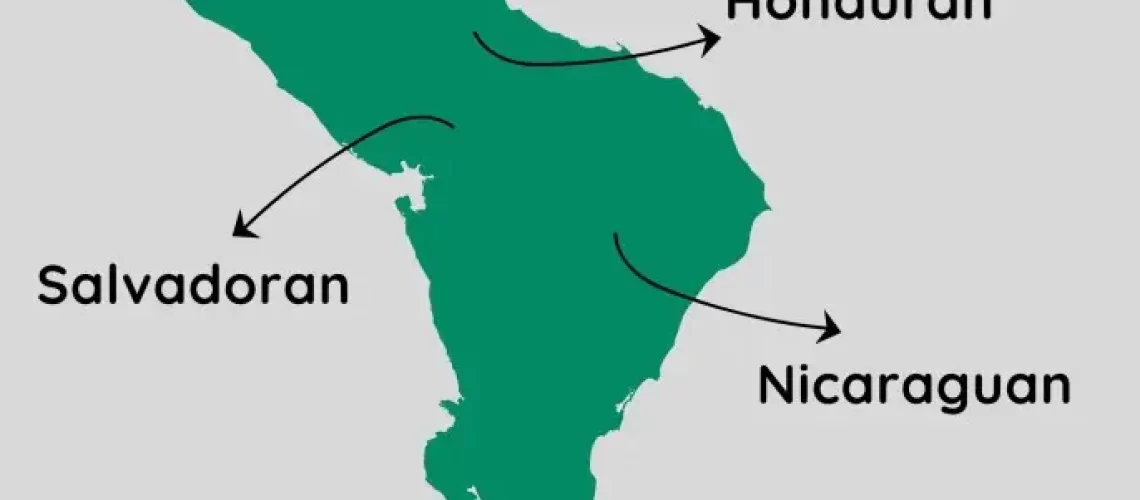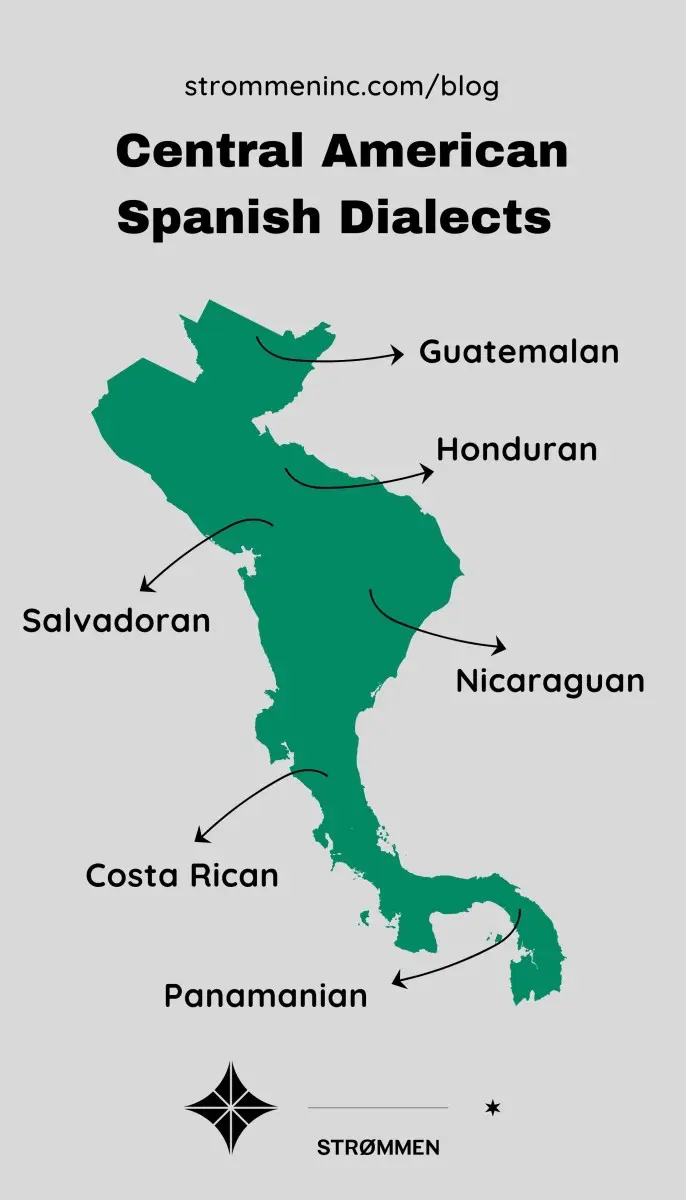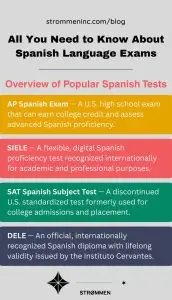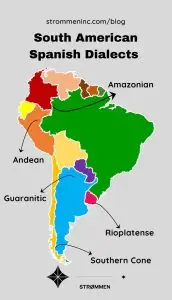Spanish may be a single language, but in Central America, it takes on many different voices. From the lively rhythms of Panamanian Spanish to the warm, easygoing tones of Costa Rica’s famous Tico Spanish, every country adds its own flavor to the way people speak. For language learners, travelers, and even native Spanish speakers from other regions, these differences can be both fascinating and a little tricky to navigate.
In this guide, we’ll break down the Central American Spanish dialects, from Guatemala, Honduras, El Salvador, Nicaragua, Costa Rica, and Panama, exploring how they sound, the unique vocabulary they use, and the cultural influences that shaped them. You’ll discover why some countries favor vos over tú, how indigenous languages left their mark on local expressions, and which slang words you’ll definitely want to know before your next trip.
Whether you’re learning Spanish for travel, conversation, or a deeper cultural connection, understanding these dialects will give you more confidence, and maybe even help you sound a little more like a local.
What Makes Central American Spanish Unique?
While Spanish in Central America shares many features with Latin American Spanish in general, it also has its own distinct characteristics that make it stand out. Understanding these traits can help language learners navigate conversations more smoothly and appreciate the cultural richness behind the words.
Common Features Across the Region
- Voseo vs. Tú
One of the most noticeable differences is the widespread use of vos, especially in countries like Guatemala, Honduras, El Salvador, Nicaragua, and Costa Rica. While tú is common in much of Latin America, vos is used in informal contexts to address friends, family, and peers. Knowing when and where to use vos will make you sound more natural when speaking with locals. - Indigenous Language Influence
Central American Spanish has been shaped by the region’s rich indigenous history. In Guatemala, for example, Mayan languages influence pronunciation and vocabulary, while in coastal areas like Honduras and Panama, Garífuna and other indigenous languages leave their mark on expressions and slang. - Pronunciation and Intonation Differences
Across Central America, you’ll notice subtle differences in pronunciation:- Some countries soften or drop the “s” at the end of syllables.
- The “j” sound may be softer or more guttural depending on the region.
- Intonation and rhythm vary, giving each country its own unique sound.
- Shared Vocabulary and Slang
While each country has its own slang, there’s also a shared pool of expressions that may not be immediately recognizable to speakers from Mexico or South America. Words and phrases often carry cultural nuances that reflect local customs, humor, and everyday life.
By keeping these key features in mind, you’ll start to notice the patterns that define Central American Spanish and make it distinct from other varieties. This foundation will also make it easier to dive into the country-specific dialects we’ll explore next.
Understanding Each Central American Spanish Dialect
Salvadoran Spanish
Salvadoran Spanish is influenced by the country’s indigenous Nahua (Pipil) heritage and colonial Spanish roots. It shares many features with other Central American dialects, including the widespread use of voseo in informal speech. Salvadoran Spanish has a soft and melodic intonation, and it includes unique regional slang and expressions that reflect the country’s culture, daily life, and humor. Despite its similarities to neighboring dialects, Salvadoran Spanish has distinct vocabulary and pronunciation that make it easily recognizable.
Key Influences and Interesting Facts:
- Strong indigenous language influence (Nahua/Pipil) on vocabulary and pronunciation.
- Colonial Spanish roots blended with regional Central American features.
- Widespread use of voseo (vos instead of tú).
- Regional variations: urban areas like San Salvador vs. rural highlands and coastal regions.
- Unique slang terms, e.g., pisto (money), chivo (cool), cuate (friend).
Guatemalan Spanish
Guatemalan Spanish is heavily influenced by the country’s rich Mayan heritage, which is reflected in both pronunciation and vocabulary. Speakers often use vos instead of tú in informal settings, and the intonation has a slightly sing-song quality compared to neighboring countries. While Spanish is the official language, many indigenous languages coexist, and this linguistic diversity has left a lasting imprint on everyday speech. Guatemalan Spanish is also known for its relatively clear pronunciation, making it easier for learners to understand compared to some other Central American dialects.
Key Influences and Interesting Facts:
- Strong Mayan language influence on vocabulary and pronunciation.
- Widespread use of voseo (vos instead of tú).
- Clearer pronunciation than in some neighboring countries.
- Regional variations: Highland areas vs. urban centers like Guatemala City.
- Some unique slang terms, e.g., pisto for money and chamaco for kid.
Honduran Spanish
Honduran Spanish is influenced by indigenous languages, particularly Lenca and Miskito, as well as colonial Spanish. The dialect varies between urban and rural areas, with coastal regions showing Caribbean influences in vocabulary and intonation. Like other Central American countries, vos is commonly used in informal contexts, and the speech often has a soft, melodic rhythm.
Key Influences and Interesting Facts:
- Strong indigenous language influence (Lenca and Miskito) on vocabulary and pronunciation.
- Caribbean coastal influence affecting intonation and rhythm, especially in coastal towns.
- Widespread use of voseo (vos instead of tú).
- Regional variations: coastal areas vs. inland highlands.
- Unique slang terms, e.g., chamba (job), pisto (money), baleada (popular street food).
Nicaraguan Spanish
Nicaraguan Spanish is influenced by indigenous languages such as Nahua and Miskito, as well as by historical contact with other Latin American countries. Like other Central American dialects, vos is commonly used in informal speech, and the intonation tends to be soft and melodic. Nicaraguan Spanish is often considered one of the clearest and most neutral varieties of Central American Spanish, making it easier for learners to understand. The dialect also includes unique local expressions and slang that reflect Nicaragua’s culture and daily life.
Key Influences and Interesting Facts:
- Strong indigenous language influence (Nahua and Miskito) on pronunciation and vocabulary.
- Some influence from Caribbean Spanish along coastal regions.
- Widespread use of voseo (vos instead of tú).
- Regional variations: urban centers like Managua vs. rural highlands and coastal areas.
- Unique slang terms, e.g., chavalo (kid), flete (transport), and güirila (a traditional corn tortilla).
Costa Rican Spanish
Costa Rican Spanish, often called “tica” Spanish, is known for its clarity and friendliness. It has been influenced by indigenous languages, colonial Spanish, and waves of immigration from other Latin American countries. Costa Ricans also heavily use voseo in informal speech, and the intonation is generally soft and melodic. The dialect is characterized by polite expressions and a tendency to avoid harsh or abrupt sounds, making it sound smooth and approachable. Costa Rican Spanish also includes unique local words and phrases that reflect the country’s culture and lifestyle.
Key Influences and Interesting Facts:
- Strong indigenous language influence and colonial Spanish roots.
- Some influence from other Latin American countries due to immigration.
- Widespread use of voseo (vos instead of tú).
- Regional variations: urban centers like San José vs. rural highlands and coastal areas.
- Unique slang terms, e.g., pura vida (a versatile phrase for “hello,” “goodbye,” “thanks,” or “everything’s great”) and mae (dude or friend).
Panamanian Spanish
Panamanian Spanish is shaped by indigenous languages, Caribbean influences, and historical trade connections through the Panama Canal. The dialect features a melodic rhythm, with some coastal regions showing faster speech and more relaxed pronunciation. Like much of Central America, voseo is common in informal settings, and Panamanian Spanish includes unique expressions and slang that reflect the country’s vibrant culture and history. The mix of influences gives Panamanian Spanish a distinctive sound that sets it apart from neighboring countries.
Key Influences and Interesting Facts:
- Strong indigenous language influence (Ngäbere, Kuna) and Caribbean coastal flavor.
- Historical Spanish colonial roots combined with international trade influences.
- Widespread use of voseo (vos instead of tú).
- Regional variations: urban Panama City vs. rural and coastal regions.
- Unique slang terms, e.g., guaro (local liquor), chevere (cool), pipo (kid).
Belizean Spanish
Belizean Spanish is influenced by a mix of indigenous languages, Caribbean Creole, and neighboring Central American dialects. Spanish in Belize is less dominant than English or Kriol, but it is widely spoken in communities along the northern and western regions. Belizean Spanish has a softer, slower rhythm compared to other Central American dialects and incorporates unique vocabulary influenced by both English and Creole. Like in much of Central America, voseo is occasionally used, but it is less consistent than in countries like Guatemala or El Salvador.
Key Influences and Interesting Facts:
- Strong indigenous and Mayan language influence, blended with Caribbean Creole and English.
- Influenced by neighboring Central American dialects, particularly from Guatemala and Honduras.
- Regional variations: northern vs. western communities, with differences in pronunciation and vocabulary.
- Unique slang and loanwords, e.g., breki (breakfast), chicle (gum), and words borrowed from English and Creole.
- Spanish is one of several languages spoken, often coexisting with English and Kriol in daily life.
How Strommen Teaches Central American Spanish Dialects
At Strommen, we understand that learning Spanish isn’t just about memorizing grammar or vocabulary, it’s about connecting with the culture, rhythm, and nuances of each country’s dialect. That’s why our platform offers specialized lessons for Central American Spanish, so learners can confidently communicate across Guatemala, Honduras, Nicaragua, El Salvador, Costa Rica, Panama, and Belize.
What Makes Our Approach Unique:
- Dialect-specific instruction: Our tutors focus on regional vocabulary, pronunciation, and expressions, ensuring learners understand the subtle differences between Guatemalan, Honduran, Nicaraguan, Costa Rican, Panamanian, Salvadoran, and Belizean Spanish.
- Cultural immersion: Lessons include insights into local customs, slang, and conversational styles, giving learners a real sense of how people speak in everyday life.
- Flexible learning: Students can choose online or in-person lessons, practice with native speakers, and receive personalized feedback to improve fluency and comprehension.
- Practical usage: We incorporate real-life scenarios, such as shopping, traveling, or chatting with locals, so learners can immediately apply what they’ve learned.
With Strommen, mastering Central American Spanish goes beyond textbooks—it’s about speaking naturally, understanding regional nuances, and building confidence to communicate in any Central American country.
Master Central American Spanish with Strommen
Learning Central American Spanish opens the door to richer connections, whether you’re traveling, working, or building friendships across the region. Each country, from Guatemala to Belize, offers its own unique pronunciation, expressions, and cultural flavor, and understanding these differences can make all the difference in communication.
At Strommen, we make it easy to explore these dialects with expert tutors who focus on regional vocabulary, pronunciation, and real-life conversation skills. Whether you want to master the melodic tones of Costa Rican Spanish, the clear voseo of Nicaraguan Spanish, or the Caribbean-influenced speech of Panama and Belize, our lessons are designed to help you speak naturally, confidently, and culturally aware.
Ready to start learning?
- Connect with a native Central American Spanish tutor today.
- Choose online or in-person lessons tailored to your goals.
- Immerse yourself in the culture, slang, and conversational style of your target country.
Contact us for a consultation with our learning experts, or find a tutor near you!





